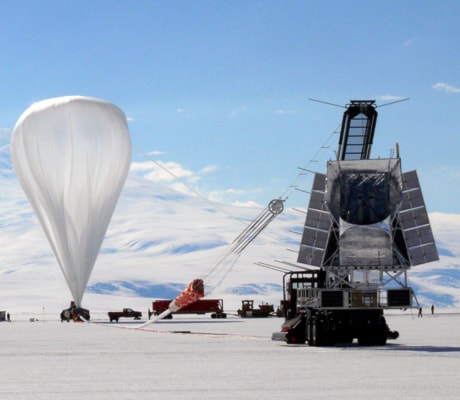VANCOUVER — A two-tonne telescope, dangling beneath a 33-storey balloon 60 kilometres above the earth, has given a team of international researchers a glimpse at the birth of stars and maybe even the origins of the universe.
It was a cheap alternative to a satellite mission that produced invaluable information for the international team of researchers, which included astronomers and astrophysicists from the University of British Columbia and the University of Toronto.
In a study published in the journal Nature, the team says their precarious experiments helped them track half the starlight in the universe to a galaxy several billion light years away.
“We would like to know where and when all the stars in the universe formed,” said Douglas Scott, from the University of British Columbia.
“The universe was dark and then it was light and stars like our own sun were born. We’d like to know how common is the sun? How unusual is the Milky Way Galaxy? We’d really like to track the cosmic star formation history.”
But those questions posed some problems.
The ancient stars born in dark clouds of dust millennia ago did give off sub-millimetre light. Unfortunately, that light cannot travel through air and is invisible to not just the naked eye, but even to powerful telescopes on earth.
So researchers built a sub-millimetre camera. But that camera was no good to them from the ground.
“You can’t even see across the street with a sub-millimetre camera,” said Barth Netterfield, whose University of Toronto team put together the experiment, did the electronics and the software as well as the analysis.
“They’re not going to do any good on the ground. You’ve got to get out of the atmosphere.”
That left few options. It costs about $100 million to launch a payload aboard a satellite. A balloon, on the other hand, cost about $1 million. It was, as they say, a no-brainer.
Canadian scientists at UBC and the University of Toronto helped to construct much of the hardware and software for the project, which also included researchers from the United States and the United Kingdom as well.
After a test flight in New Mexico, BLAST — the Balloon-borne Large-Aperture Sub-millimetre Telescope — took flight in northern Sweden in 2005 and in December 2006 in Antarctica.
The mission was not without its casualties.
BLAST crashed upon landing in 2006, scattering debris over 200 kilometres of Antarctic ice. The parachute didn’t come off and the telescope was dragged across unforgiving landscape in high winds.
“That was a rather stressful couple of days,” said Netterfield.
Researchers spent days combing the area from a plane, looking for a data needle in a high-tech debris haystack. Somewhere amongst what was left of the tonnes of twisted metal and shards was a data goldmine 30 centimetres in diameter and a metre long.
“It was pretty heartbreaking,” said Gaelan Marsden, a UBC graduate student at the time. He’d been in Antarctica for six weeks but had returned to Vancouver by the time of the crash.
Against the odds, the pilot of the search flight spotted the data canister from the air. Trained mountaineers had to retrieve it from the crevasse where it had ended up.
The metal discs were battered and broken. The team wasn’t sure the information could be retrieved.
“Everything we’d spent five or six years working on was on those discs,” Scott said. “That was very nerve-wracking figuring out whether we still had the data or not.”
They did.
It took two years to analyze the data from the BLAST, along with data collected from NASA’s Spitzer Space Telescope.
What BLAST did was look back at the peak of star formation in a galaxy seven- to 10-billion years ago, when the universe was just a few billions years old.
